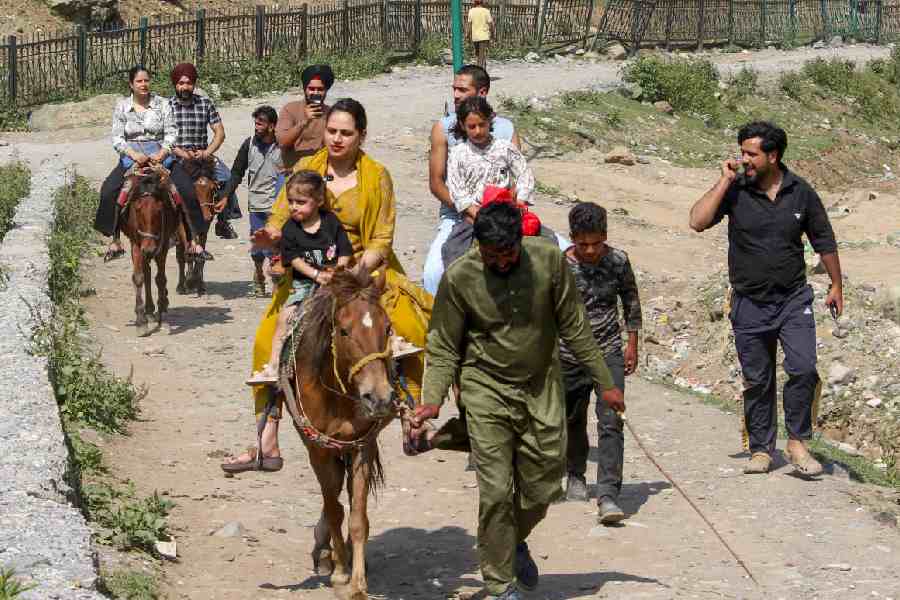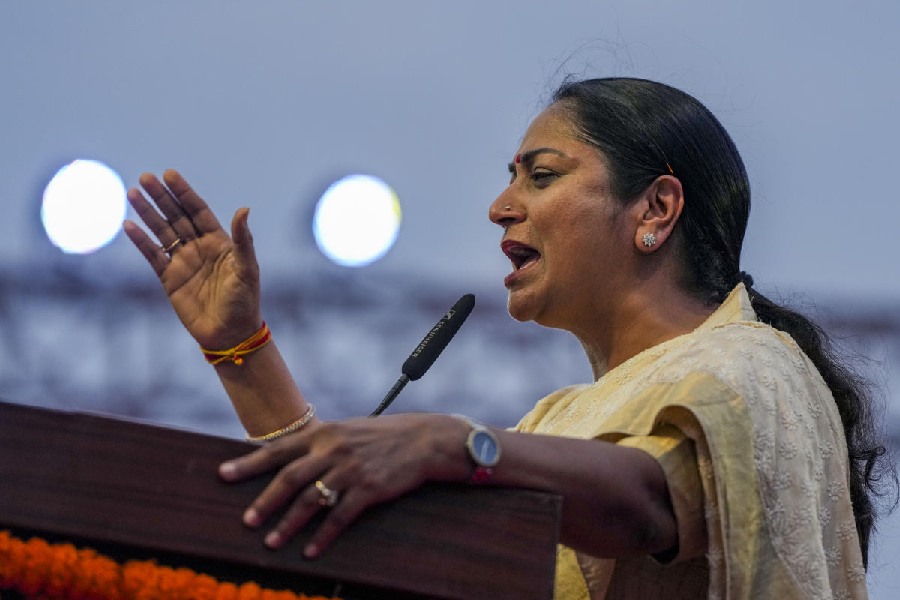If you celebrated Janmashtami at home last week, you must have made Tal-er Bora. This delicious snack is said to be a favourite of little Krishna and hence a must at his birth anniversary.

But not just snacks, the Tal is a tree of multiple uses. Its young fruits are cut open to expose seed sockets filled with jelly like substance. Covered with a thin yellow skin this is known as “Talsans” in Bengali. It contains watery fluid inside and is tasty and refreshing in hot summer days.
Sometimes matured seeds of the fruits are buried in soil pits, allowed to germinate and the kernel inside it (Talphonpra) is eaten as delicacy, especially on Lakshmi puja. The floral branches of the tree are supplied abundantly with sap, which farmers gather in earthenware pots. The fresh sap, neera, is a nourishing drink and if fermented, makes a kind of country liquor known as toddy.
This is why, the Tal, or Palmyra Palm, is also known as Toddy Palm.
One of the most economic trees of India, its matured stem is hard, heavy, durable and termite-proof. So it’s widely used to make beams, particularly in structures exposed to harsh weather. Soft Palmyra leaves are used to make mats, baskets, fans, hats, umbrella etc. In ancient India the leaves were used as writing materials. Sugar and jaggery are also obtained by boiling the unfermented sap into a syrupy consistency and then allowing it to cool.
The Palmyra Palm is a tall robust fan-leaved dioecious tree with columnar stem 20m or more in height and about 60cm in diameter near the base.

This tree of the Arecaceae family is scientifically known as Borassus flabellifer and it is indigenous to India. This semi-wild palm is distributed throughout the dry areas of Tamil Nadu, Andhra Pradesh and Maharashtra, where there are extensive groves. This is rarely grown as ornamental palm. The botanical garden in Howrah has a beautiful avenue of the Palmyra Palm.
The stem of this tree is deep grey to black in colour with deeply-marked scars of fallen leaves. The base of the stem is swollen, sometimes with exposed superficial roots.
Leaves are fan-shaped and rigid, 0.9 to 1.5m in diameter. They are a shining dark green shade, divided into 60-80 lance-shaped segments, folded along the midrib. The petiole is 0.6-1m long and strongly dentate at the margin.
Its flowers are green. Male and female flowers appear during March-April on different trees. The male trees have stout branches densely clothed with bracts while female flowers are globose, 2.5cm across and larger than the males. Early flowering is seen in many trees of South 24 Parganas.
Generally the fruits start maturing from July. They are large, broadly ovoid and up to 20cm in diameter. They are yellow brown in colour when young and nearly black when ripe.
• To be continued
... and dessert on your plate
To extract viscous juice from ripe ‘tal’: Wash the tal thoroughly and remove the crown of the fruit and the outer black skin. Separate fibrous kernels by pressing softly. Sprinkle little water on the kernels and squash out the juice from it using a hand grater. Remove also the fibrous hair-like strands using a sieve. Heat a kadai. Cook the juice in medium flame until it thickens to the consistency of condensed milk. Allow the juice cool down a bit.
Palm Fritters

Ingredients:
• Juice - 1 cup
• Boiled rice powder - 2/3 cup
• Flour - 1/4th cup
• Grated coconut - ½ cup
• Sugar- ½ cup or according to taste
• Salt - a pinch
• Cardamom powder - ½ cup
• White oil - for frying
Combine the above ingredients thoroughly in a bowl and keep aside for an hour. There should not be any lumps. Heat enough oil in a deep-bottomed pan. Drop one tablespoon batter (you can fry 10-15 at a time) and fry till golden brown on medium flame. This way the fritters will be cooked from inside and will be crispy from the outside. Drain on kitchen paper and serve.
Palm Malpua

Ingredients:
• For sugar syrup - 1 cup sugar and 2 cups water
• White oil - for frying
• Juice - 2 cups
• Semolina - 1 cup (soak in water)
• Flour - 1 cup
• Crushed cardamom - 4-5
• Aniseeds - 1 tsp
• Soaked raisins - tbsp
For sugar syrup -
Pour and mix the water and sugar in a deep-bottomed saucepan and bring to boil. Lower the heat and continue cooking.
Remove and discard the scum from the top from time to time. Make one string syrup and keep aside.
Whisk together all the ingredients (except aniseeds, raisins and cardamom) adding necessary water to make a thick batter.
Mix aniseeds, cardamom and raisins and stand for an hour. Heat oil in a pan. Drop a batter which spread to make malpua.
Fry till brown and crisp at the edges. Remove and drain off. Soak in prepared syrup.
Recipes: Sudeshna Maiti
Pictures: Sanat Kumar Sinha










